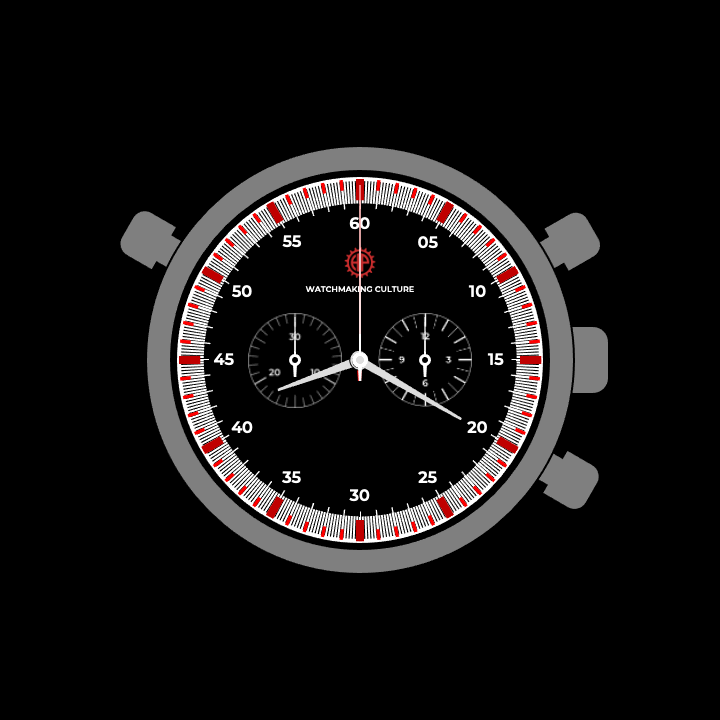SPLIT-SECOND CHRONOGRAPH
The split-second chronograph, also known as a double chronograph, is a horological complication that allows the measurement of two time intervals simultaneously and independently. This function is particularly valued in sports timing, as it enables the measurement of two events of different durations or the recording of an intermediate split time during a single event.
The split-second chronograph differs from traditional chronographs because of its second chronograph hand, known as the split-second hand, and a third pusher (the split-second pusher). This pusher can be placed anywhere around the case band or, more elegantly, integrated into the crown.
This complex mechanism consists of two superimposed chronograph hands—a main chronograph hand and a secondary split-second hand. When the start/stop pusher is pressed, both hands start simultaneously. However, the split-second hand can be stopped and restarted independently from the main chronograph hand by pressing the third pusher (the split-second pusher), allowing for multiple intermediate time measurements.

Regardless of the state of the split-second hand (running or stopped), pressing the start/stop pusher will halt the entire chronograph mechanism.
The mechanism behind this function relies on a clutch and release system, typically operated by a clamp, which allows the split-second hand to be held in place at a given moment while the main chronograph hand continues its movement.
The addition of the split-second function requires a more complex command system within the mechanism. This can involve cams with more intricate profiles or an additional level, particularly when the system is controlled by a column wheel. In such cases, the column wheel may feature an extra tier of columns or be paired with a second column wheel, further enhancing the complexity of the mechanism.
